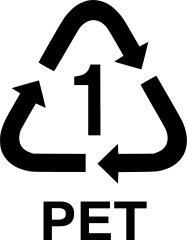Removing harmful pathogens from questionable water sources is a challenge for any outdoor enthusiast. The most common methods are boiling, filtering, chemically treating, and exposing to UV light. When most of us think of UV light, we think of an expensive battery powered device, such as a Steripen™. The sun, however, is also a pretty good source of UV light, and given enough time to do its thing, can be just as effective as its artificial counterpart.
Solar Water Disinfection, or SODIS, is supported by the World Health Organization, UNICEF, and the Red Cross. It has become more and more popular in developing nations as a cheap and effective water treatment solution. The required ingredients for success are fairly simple and readily available:
- A clear Polyethylene terephthalate (PET) bottle
- Water
- Sunlight
- 6+ Hours
 There are of course a few minor important details.
There are of course a few minor important details.
 The bottle must be clear, unlabeled, unscratched and no larger than 2 Litters. If the water is deeper than 10-12 inches, the UV light penetrate is decreased, and results less effective.
The bottle must be clear, unlabeled, unscratched and no larger than 2 Litters. If the water is deeper than 10-12 inches, the UV light penetrate is decreased, and results less effective.- In the US, PET or PETE bottles are usually labeled with recycle code “1”.
- The water being treated should be relatively clear. Cloudy or turbid water should be filtered prior to treatment.
- Bottles should be placed on their side, not upright, to ensure maximum exposure to sunlight. Placing bottles on reflective surfaces have proven even more effective.
- The sunlight should be relatively unobstructed. If clouds cover more than half the sky, the exposure time will need to be increased, typically doubled.
- This technique works well on common pathogens, which can cause life threatening diarrhea, but it is not effective against poisons or toxins.
Clearly this method was designed with developing nations in mind.
What about outdoor adventurers?
The question of SODIS for backpackers really comes down to practicality. Although there certainly is plenty of sunlight in the wilderness, adventurers are often on the go, making 6 hours of undisturbed solar exposure a challenge. Many are already struggling to figure out how to recharge their smartphones with clunky portable solar panels. The thought of adding rows of water filled PET bottles in to the mix is perhaps just too much to ask.
Also, backpackers may not have the required easy to find in the front-country bottles. Although some ultraliters, and some ultra-cheapskates, may carry reused ultra-thin Code-1 PET bottles (the Gatorade™ type), most of us have been trained to carry indestructible Code-7 BPA Free bottles (the Nalgene™ type). Unfortunately Code-7 bottles do not allow the UV light from the sun to work its magic.
Is any of this relevant to backpackers?
 Perhaps. When most outdoors enthusiasts think about gathering water, we tend to favor fast moving streams. The assumption is that the aeration and filtering will produce a purer, healthier water source. Assumptions, however, are not always correct. SODIS has proven that extended undisturbed exposure to UV light can disinfect pathogens. Water in swift flowing streams is far from undisturbed exposure. Lakes, however, are a different matter. Is it possible that lake water, relatively still and exposed to repeated daily doses of UV light, is a better source of safe water?
Perhaps. When most outdoors enthusiasts think about gathering water, we tend to favor fast moving streams. The assumption is that the aeration and filtering will produce a purer, healthier water source. Assumptions, however, are not always correct. SODIS has proven that extended undisturbed exposure to UV light can disinfect pathogens. Water in swift flowing streams is far from undisturbed exposure. Lakes, however, are a different matter. Is it possible that lake water, relatively still and exposed to repeated daily doses of UV light, is a better source of safe water?
According to Robert W. Derlet, MD, a Sierra Water researcher and author:
The UV rays from sunlight are powerful killers of microorganisms. For this reason, the first twelve inches of surface lake water have the fewest microorganisms. In nearly 300 samples of water from Sierra wilderness areas, our research group consistently found fewer total bacteria in lake surface water when compared to streams. In addition to sunlight, other factors may also reduce bacteria including settling effects, or ingestion of bacteria by zooplankton or other small organisms.
In other words, even if we do not carry PET bottles, and line them up for 6 hours of exposure, we can benefit from the cleansing SODIS-like method of UV light, if we are careful where we gather our water. It turns out, the tops of lakes are better than the bottoms.
So as you sing your way towards the wilderness water, remember:
Take it from the TOP!
NOTE: The SODIS Initiative is part of the Swiss Federal Institute of Aquatic Sciences and Technology. For more information, consult their website:
